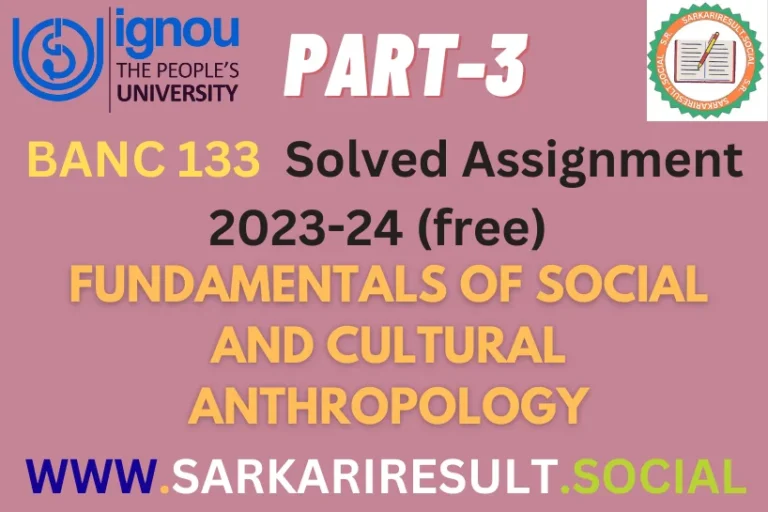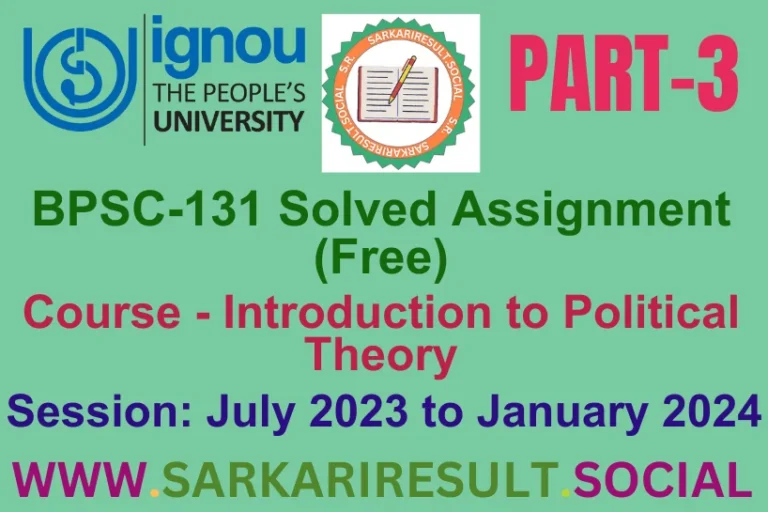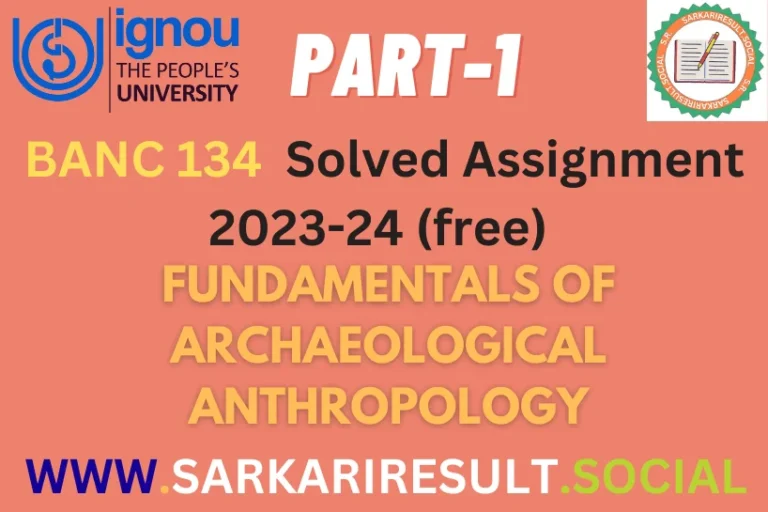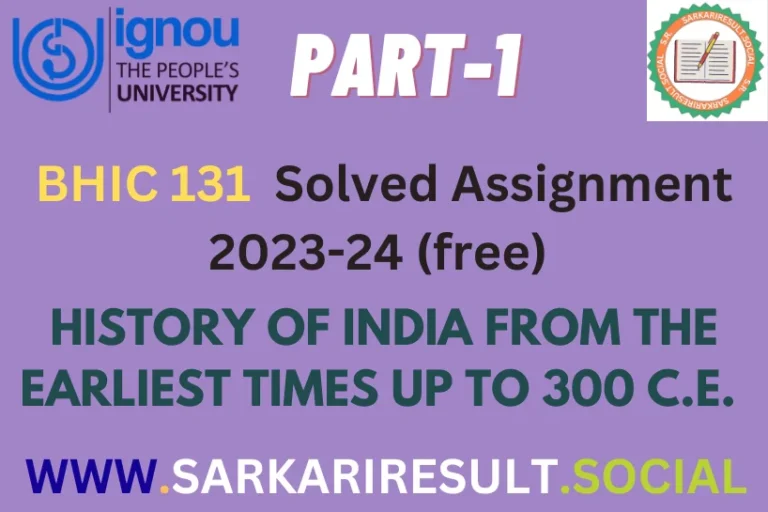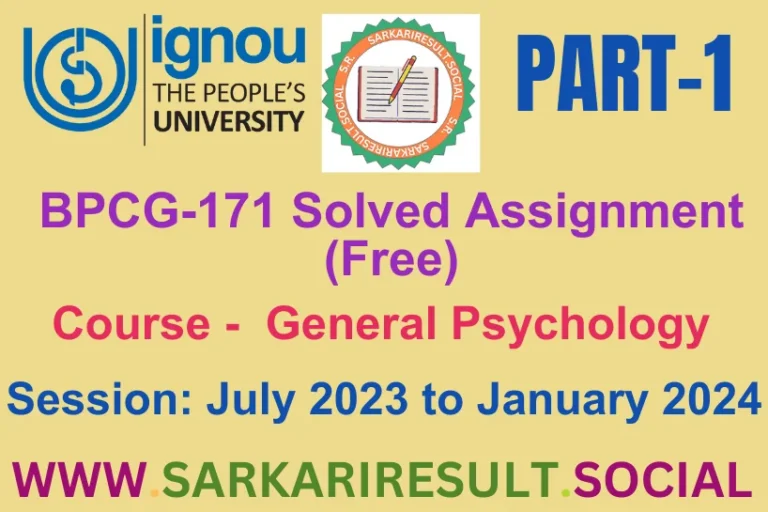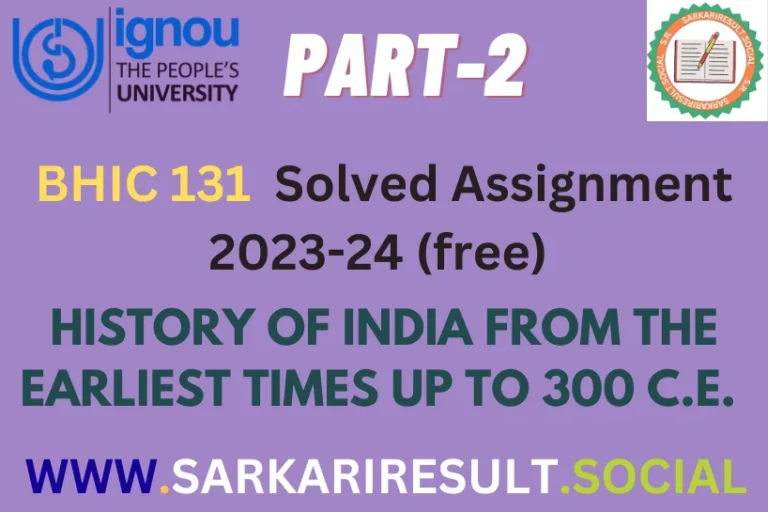BSOG 171 SOLVED IGNOU ASSIGNMENT FREE PART 3
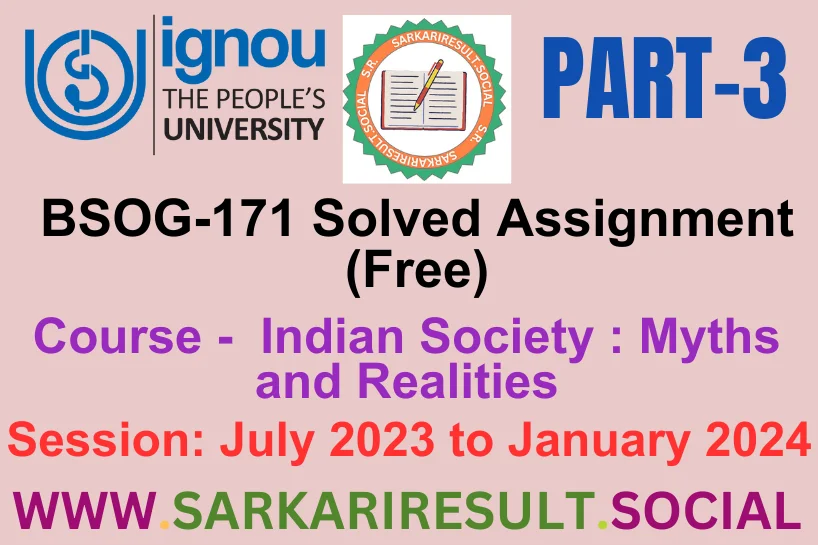
Welcome to the BSOG 171 SOLVED IGNOU ASSIGNMENT FREE PART 3 TMA. Assignment C simplifies your approach with concise answers to five questions. In just 100 words per response, explore purity and pollution, affinal relatives, pilgrimage towns, ethnic boundaries, and the concepts of Varna and Jati. Our IGNOU Solved Assignments 2024 for this section serve as your creative guide.
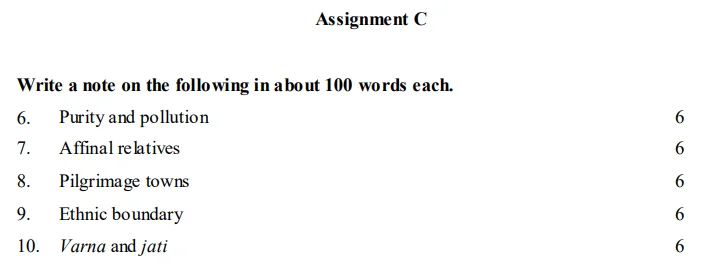
Write a note on the following in about 100 words each.
Q.6 Purity and pollution
Ans. Purity and pollution are cultural concepts often associated with religious or social practices. In many societies, certain things, people, or actions are deemed pure, symbolizing cleanliness, holiness, or adherence to norms. Conversely, pollution signifies impurity or contamination, often linked to ritual or moral transgressions.
These concepts shape behaviors, customs, and taboos, influencing everything from religious ceremonies to daily life. The dichotomy of purity and pollution reflects a society’s values and contributes to the establishment of norms and boundaries within a cultural context.
Q.7 Affinal relatives
Ans. Affinal relatives are individuals related through marriage rather than blood ties. These relatives include one’s spouse, in-laws, and other kin acquired through marriage. Unlike consanguineous relations linked by shared ancestry, affinal relationships are formed through the legal and social institution of marriage.
Affinal ties play a crucial role in kinship systems, shaping social networks, responsibilities, and alliances within families and communities. Understanding and navigating affinal relationships are integral to comprehending the intricate dynamics of family structures across diverse cultures and societies.
Q.8 Pilgrimage towns
Ans. Pilgrimage towns are sacred destinations revered for their religious significance, drawing devout followers from various faiths. These towns host temples, mosques, churches, or shrines that attract pilgrims seeking spiritual fulfillment and blessings. Examples include Varanasi in Hinduism, Mecca in Islam, Lourdes in Christianity, and Bodh Gaya in Buddhism.
Pilgrimage towns often have rituals, festivals, and cultural practices centered around their sacred sites, creating a sense of communal devotion. These places serve as focal points for religious worship, reflection, and a shared sense of spirituality among believers who undertake journeys to seek divine blessings and enlightenment.
Q.9 Ethnic boundary
Ans. An ethnic boundary delineates the perceived distinction between different ethnic groups, marking cultural, linguistic, or historical differences. It acts as an invisible, often symbolic, line demarcating one ethnic community from another. Ethnic boundaries can manifest in various forms, such as language, customs, religious practices, or physical geography.
These boundaries play a significant role in shaping social identities, group affiliations, and can influence inter-group relations. The existence and negotiation of ethnic boundaries contribute to the complex tapestry of multicultural societies, influencing interactions, inclusion, and sometimes tensions between different ethnic communities.
Q.10 Varna and jati
Ans. Varna and Jati are key concepts in the Indian social system. Varna refers to the ancient, fourfold hierarchical classification of society into Brahmins (priests and scholars), Kshatriyas (warriors and rulers), Vaishyas (merchants and farmers), and Shudras (laborers).
Jati, on the other hand, pertains to the intricate system of numerous endogamous groups, often determined by occupation, birth, or region. While Varna outlines broad social categories, Jati delves into specific social groups, creating a complex network of social stratification. Together, Varna and Jati contribute to the intricate structure of India’s traditional caste system.
Also See This: BSOG 171 SOLVED IGNOU ASSIGNMENT FREE PART 1

